1. 序言
供應鏈攻擊是一種傳播間諜軟件的方式,一般通過產品軟件官網或軟件包存儲庫進行傳播。通常來說,黑客會瞄準部署知名軟件官網的服務器,篡改服務器上供普通用戶下載的軟件源代碼,將間諜軟件傳播給前往官網下載軟件的用戶。在實施攻擊時,有一種方式是通過污染上游廠商的編譯環境來攜帶攻擊者的惡意載荷。
在污染編譯環境時,對污染文件的選擇上,需要關注兩個重點,第一,要確保被污染分代碼能夠被編譯進目標程序,第二,需要足夠隱蔽,防止被安全工具檢測到。在Windows環境下,通過替換MSVC的C標準運行庫的方式可以同時達到上訴兩種要求,下面詳細介紹該技術的實現細節。
2. 環境與工具
靶場Windows靶機 任意版本visualstudio MSVC組件
3. MSVC組件
MSVC全稱Microsoft Visual C++,是微軟公司的免費C++開發工具,具有集成開發環境,可提供編輯C語言,C++以及C++/CLI等編程語言。VC++集成了便利的除錯工具,特別是集成了微軟Windows視窗操作系統應用程序接口(Windows API)、三維動畫DirectX API,Microsoft .NET框架。可以通過打開Visual Studio Installer查看MSVC組件文件目錄,需要污染的C標準運行庫就是在該目錄下。
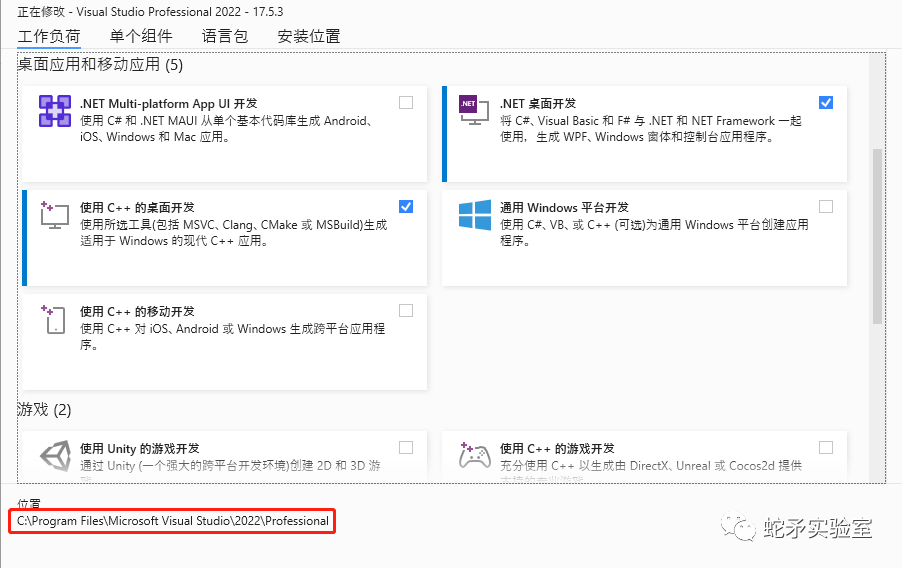
MSVC有多個版本,可以通過設置中的平臺工具集確認自己當前使用的版本,由于筆者當前使用的版本是v143,即14.3。
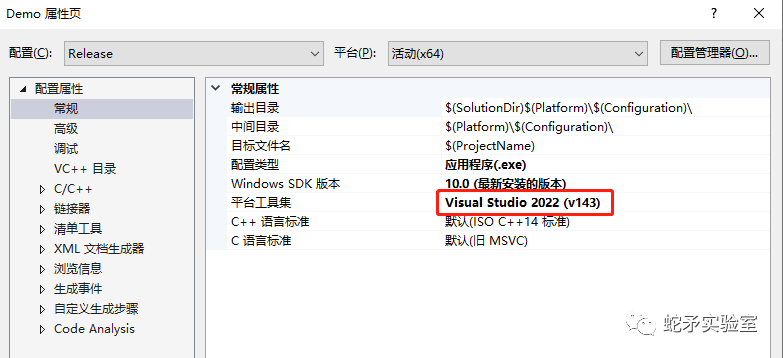
4. C標準運行庫-MSVCRT.LIB
1. 什么是MSVCRT.LIB
Visual Studio使用的CRT靜態庫文件為MSVCRT.LIB,CRT全程為C runtime Library,意義為Windows的C標準運行庫,初始CRT的代碼位于多個庫文件中,大多數軟件發布時使用運行庫的動態多線程RELEASE版本,該種方式在編譯時需要用到MSVCRT.LIB。
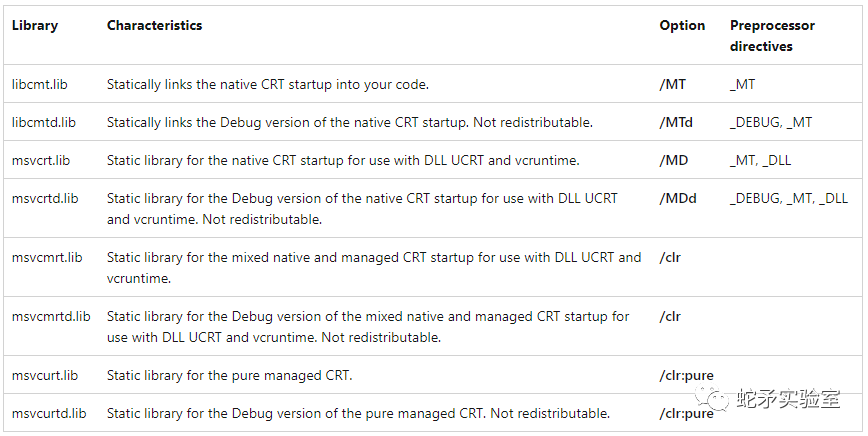 圖:MSVC的CRT初始化庫
圖:MSVC的CRT初始化庫
如果對程序進行調試,觀察程序的調用堆棧,會發現程序并非是從編寫的main函數開始執行的,這是因為開發者編寫C代碼時,入口點雖然為main函數,但是在程序運行時,程序真正的入口點為mainCRTStartup函數,在編譯時會將MSVCRT.LIB的內容鏈接到開發者自定義代碼之前。
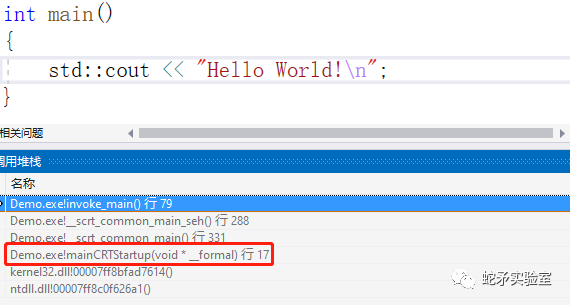
2. MSVCRT.LIB的路徑
上文中,我們介紹過MSVC組件的路徑,并確定使用的版本為14.3,MSVCRT.LIB文件及其源碼均在該目錄下。源碼文件在crtsrcvcruntime中,MSVCRT.LIB在lib文件下存在多種版本,本文使用x86下的MSVCRT.LIB進行演示。

3. 程序的執行流程
在程序運行時,真正的入口點為mainCRTStartup函數,該程序被定義在exe_main.cpp中,其源碼如下。
#define_SCRT_STARTUP_MAIN #include"exe_common.inl" extern"C"DWORD mainCRTStartup(LPVOID) { return__scrt_common_main(); }
可以看到mainCRTStartup調用了scrt_common_main,根據include我們可以知道scrt_common_main被定義在了exe_common.inl中,exe_common.inl的部分代碼如下。
static__declspec(noinline) int__cdecl __scrt_common_main_seh() { if(!__scrt_initialize_crt(__scrt_module_type::exe)) __scrt_fastfail(FAST_FAIL_FATAL_APP_EXIT); boolhas_cctor = false; __try { boolconstis_nested = __scrt_acquire_startup_lock(); if(__scrt_current_native_startup_state == __scrt_native_startup_state::initializing) { __scrt_fastfail(FAST_FAIL_FATAL_APP_EXIT); } elseif(__scrt_current_native_startup_state == __scrt_native_startup_state::uninitialized) { __scrt_current_native_startup_state = __scrt_native_startup_state::initializing; if(_initterm_e(__xi_a, __xi_z) != 0) return255; _initterm(__xc_a, __xc_z); __scrt_current_native_startup_state = __scrt_native_startup_state::initialized; } else { has_cctor = true; } __scrt_release_startup_lock(is_nested); // If this module has any dynamically initialized __declspec(thread) // variables, then we invoke their initialization for the primary thread // used to start the process: _tls_callback_type const* consttls_init_callback = __scrt_get_dyn_tls_init_callback(); if(*tls_init_callback != nullptr&& __scrt_is_nonwritable_in_current_image(tls_init_callback)) { (*tls_init_callback)(nullptr, DLL_THREAD_ATTACH, nullptr); } // If this module has any thread-local destructors, register the // callback function with the Unified CRT to run on exit. _tls_callback_type const* consttls_dtor_callback = __scrt_get_dyn_tls_dtor_callback(); if(*tls_dtor_callback != nullptr&& __scrt_is_nonwritable_in_current_image(tls_dtor_callback)) { _register_thread_local_exe_atexit_callback(*tls_dtor_callback); } // // Initialization is complete; invoke main... // intconstmain_result = invoke_main(); // // main has returned; exit somehow... // if(!__scrt_is_managed_app()) exit(main_result); if(!has_cctor) _cexit(); // Finally, we terminate the CRT: __scrt_uninitialize_crt(true, false); returnmain_result; } __except (_seh_filter_exe(GetExceptionCode(), GetExceptionInformation())) { // Note:We should never reach this except clause. intconstmain_result = GetExceptionCode(); if(!__scrt_is_managed_app()) _exit(main_result); if(!has_cctor) _c_exit(); returnmain_result; } } // This is the common main implementation to which all of the CRT main functions // delegate (for executables; DLLs are handled separately). static__forceinline int__cdecl __scrt_common_main() { // The /GS security cookie must be initialized before any exception handling // targeting the current image is registered. No function using exception // handling can be called in the current image until after this call: __security_init_cookie(); return__scrt_common_main_seh(); }
觀察源碼我們可以看到scrt_common_main中調用了安全cookie與scrt_common_main_seh,scrt_common_main_seh中通過invoke_main到達用戶定義的main函數,其調用如下圖所示。
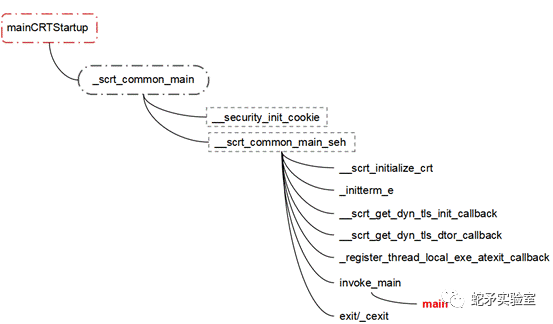
上訴內容執行早于main函數,所以污染MSVCRT.LIB文件可以確保注入的代碼必然被執行,又因上訴函數調用非敏感函數,通常安全工具不會對其進行檢測,因此保證了隱蔽性。
5. 編譯環境污染
1. 文件編譯
在源碼中,我們挑選一個文件進行代碼注入,本文選擇dyn_tls_init.c進行演示,dyn_tls_init.c的源碼如下。
// // dyn_tls_init.c // // Copyright (c) Microsoft Corporation. All rights reserved. // // This source file provides a fallback definition of __dyn_tls_init_callback, // used whenever TLS initialization is not required. // // This relies on a feature of the C compiler known as "communal variables." // This does not work in C++, and the linker's alternatename features is not // sufficient here. // #include#pragmawarning(disable: 4132) // const object should be initialized constPIMAGE_TLS_CALLBACK __dyn_tls_init_callback; PIMAGE_TLS_CALLBACK const* __cdecl __scrt_get_dyn_tls_init_callback() { return&__dyn_tls_init_callback; }
添加一些自定義代碼
#include#pragmawarning(disable: 4132) // const object should be initialized constPIMAGE_TLS_CALLBACK __dyn_tls_init_callback; add(intx,inty){ returnx + y; } PIMAGE_TLS_CALLBACK const* __cdecl __scrt_get_dyn_tls_init_callback() { intx = 1; inty = 2; intz = add(x, y); return&__dyn_tls_init_callback; }
關閉編譯優化選項,此過程不可省略,CTRL+F7編譯;
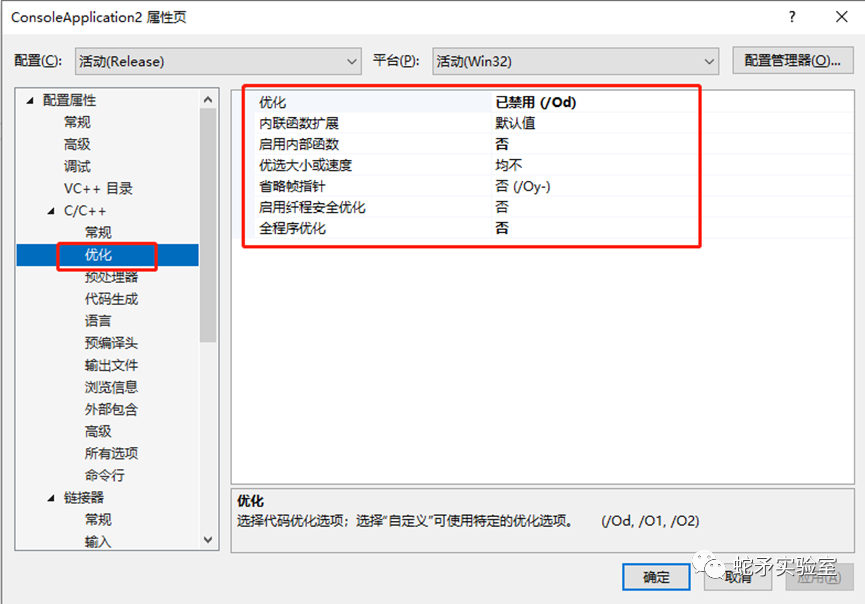
將編譯好的obj文件拷貝出來。

2. 清理原始obj
obj文件就是c文件編譯之后產生的一種文件,一個c文件編譯之后只會產生一個obj文件,一個lib文件是obj文件的集合,當然,其中還夾雜著其他一些輔助信息,目的是為了讓編譯器能夠準確找到對應的obj文件,這些文件一起通過AR打包。我們需要找到這些輔助信息完成LIB文件中obj目標文件的替換。obj文件可以利用類似7z工具進行解包,解壓后如下。

在目錄中有兩個文本文件,里面記錄了obj文件對應信息,搜索dyn_tls_init.obj,搜索到D:a_work1sIntermediatecrtvcstartupuildmdmsvcrt_kernel32msvcrt_kernel32.nativeprojobjrx86dyn_tls_init.obj,該值為dyn_tls_init.obj打包時文件的路徑。刪除MSVCRT.LIB文件中dyn_tls_init.obj的相關信息,刪除obj需要link.exe工具,該工具在MSVC的bin目錄下,刪除指令如下。
link-lib"XX:XXXmsvcrt.lib" -remove:D:a\_work1sIntermediatecrtvcstartupbuildmdmsvcrt_kernel32msvcrt_kernel32.nativeprojobjrx86dyn_tls_init.obj
3. 寫入新編譯obj
在清理完原始obj文件后,將新編譯好的obj文件寫入lib文件,解壓lib文件后,可以發現除了文本文件外,還有一個文件夾名為D_,該文件夾代表obj文件打包前所在的磁盤盤符,也就是D盤。在通過MSVC的工具進行打包時,會根據obj所在路徑創建對應的文件,并將obj的路徑記錄到里面的文本文件中。也就是說新編譯好的文件不需要與原始obj文件在相同目錄下,但是為了看起來更加完美,建議根據文本文件中的地址為編譯好的obj文件創建相同的路徑。寫入lib文件需要用到lib.exe工具,使用指令如下。
lib "XX:XXXmsvcrt.lib""D:a\_work1sIntermediatecrtvcstartupuildmdmsvcrt_kernel32msvcrt_kernel32.nativeprojobjrx86dyn_tls_init.obj”
寫入obj后,新建一個C/C++的項目,隨意編寫一些代碼。
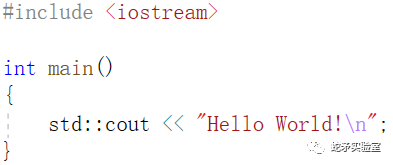
編譯后使用反匯編工具查看main之前的代碼,發現寫入dyn_tls_init.obj的功能已經被編譯到工程中,反匯編代碼如下。
call___scrt_release_startup_lock pop ecx callsub_401CD0 mov esi, eax xoredi, edi cmp [esi], edi jz shortloc_401783 push esi call___scrt_is_nonwritable_in_current_image pop ecx testal, al jz shortloc_401783 mov esi, [esi] push edi push 2 push edi mov ecx, esi callds:___guard_check_icall_fptr callesi callsub_401D0B mov esi, eax cmp [esi], edi jz shortloc_4017A1 push esi call___scrt_is_nonwritable_in_current_image pop ecx testal, al jz shortloc_4017A1 push dword ptr [esi] ; Callback call_register_thread_local_exe_atexit_callback pop ecx call_get_initial_narrow_environment mov edi, eax call__p___argv mov esi, [eax] call__p___argc push edi ; envp push esi ; argv push dword ptr [eax] ; argc call_main
##注入的內容 #sub_401CD0 pushebp movebp, esp subesp, 0Ch mov[ebp+var_8], 1 mov[ebp+var_4], 2 moveax, [ebp+var_4] pusheax movecx, [ebp+var_8] pushecx callsub_401D00 addesp, 8 mov[ebp+var_C], eax moveax, offsetunk_405380 movesp, ebp popebp retn #sub_401D00 pushebp movebp, esp moveax, [ebp+arg_0] addeax, [ebp+arg_4] popebp retn endp
6. 總結
通過上訴例子可以看出,污染CRT靜態庫文件的方式簡單易用,且具有很高的隱蔽性,當攻陷對方編譯服務器時,該方式危害極大,因其與源碼一同被編譯到項目中,會攜帶合法簽名。希望在大家在了解其工作原理后,不僅收獲了一種新的代碼劫持技能,在分析惡意軟件時也多了一個思路。
丈八網安蛇矛實驗室成立于2020年,致力于安全研究、攻防解決方案以及靶場仿真復現等相關方向。團隊核心成員均由從事安全行業10余年經驗的安全專家組成,團隊目前成員涉及紅藍對抗、滲透測試、逆向破解、病毒分析、工控安全以及免殺等相關領域。
審核編輯:劉清
-
CRT技術
+關注
關注
0文章
5瀏覽量
6685 -
匯編語言
+關注
關注
14文章
412瀏覽量
36910 -
C++語言
+關注
關注
0文章
147瀏覽量
7308 -
CLI
+關注
關注
1文章
80瀏覽量
8816
原文標題:供應鏈攻擊之編譯環境
文章出處:【微信號:蛇矛實驗室,微信公眾號:蛇矛實驗室】歡迎添加關注!文章轉載請注明出處。
發布評論請先 登錄
巧用命令實現PG LIB的增量式生成
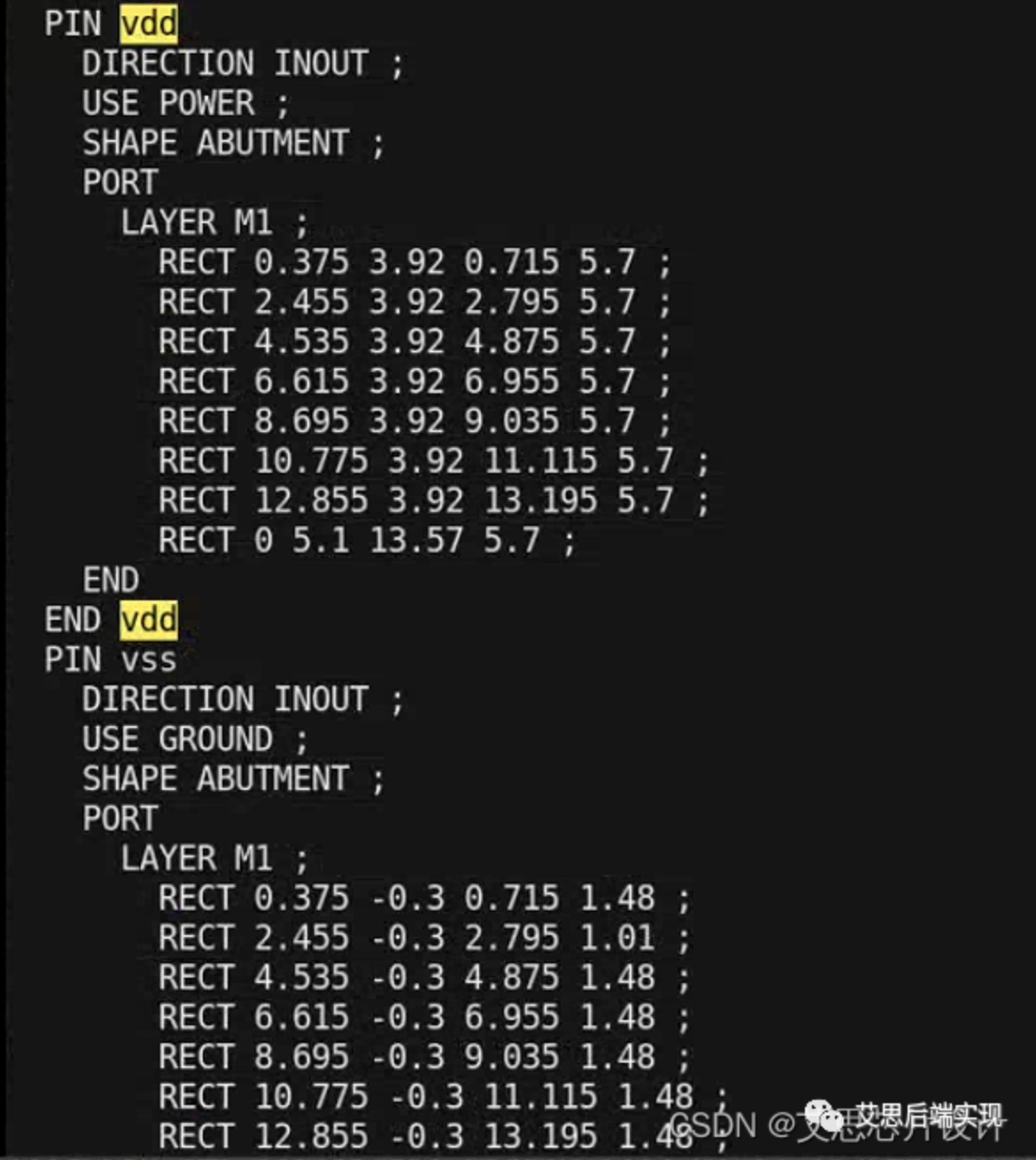
分立器件的實現的細節
時序分析基本概念介紹——時序庫Lib,除了這些你還想知道什么?

keil和IAR中lib庫文件的生成和使用

e2 studio創建lib文件及使用

























評論